Wearables: 2014 and Beyond
by Stephen Barrett on January 15, 2015 11:50 AM EST- Posted in
- Wearables
- Apple
- Microsoft
- pebble
- Android Wear
- Microsoft Band
- Fitbit
Wearable Products in 2014
Microsoft
In 2014, seemingly out of nowhere (as there were no leaks or press ahead of time), Microsoft launched their first wearable since 2004 with the Microsoft Band. The Microsoft Band utilizes a Cortex-M4 processor and thus runs an embedded OS, not Windows NT. As with other devices using microcontrollers, its first focus is fitness tracking and not smart watch functionality (although that is also included). Microsoft however does fitness slightly differently than their competitors and actually regards this as the launch of both the Microsoft Band and their health platform, Microsoft Health.
Microsoft Health is a cloud service, such as OneDrive, that aims to help improve the health of its users through data analysis and actionable feedback. Activity tracking devices and apps that connect to Microsoft Health publish data, with your permission, to the Microsoft Health server. Microsoft claims their cloud data framework and analysis provides the only total health service available. Additionally, the Microsoft Health framework is referred to as an open platform, therefore other companies can interface with it as both publishers of data and subscribers of analysis. Microsoft Health also connects to the existing Microsoft service, HealthVault, which contains personal and family medical information and lab results.
The Microsoft Band itself is the combination of 10 sensors, including some interesting ones such as skin temperature, UV light, and galvanic skin response. Uniquely, the Microsoft Band works with all three major mobile operating systems (iOS, Android, and Windows Phone) by connecting to the corresponding Microsoft Health app. However, you can perform activities (such as running) without a paired device.
Another unique feature is the continuous heart rate monitoring. Other devices, such as Android wear, only periodically query the wearer’s heart rate. Microsoft claims this allows them to do better holistic analysis of health. In my experience with the Moto360, depending on how tight you wear the device, the heart rate sensor may not work. Comparatively, the Microsoft Band is mechanically designed so the best way to wear it is always in close contact with your skin. Finally, Microsoft will even license the electronics and software design of the Microsoft Band for other companies to create their own wearables connected to Microsoft Health.
The band itself provides some smart watch features such as calendar, email, and messaging notifications. When paired with a Windows Phone, Cortana support is also available for similar functionality to Google Now. One difference between Android Wear and the Microsoft Band is with app interfacing. As mentioned previously, Android Wear relies on apps running alongside (on your smartphone) or on the device to do things such as run tracking. The Microsoft Band instead has built in support for run tracking, and can publish that data to both Microsoft Health and any compatible app like RunKeeper. Therefore, the Microsoft Band out-of-the-box has several fitness related functionalities without relying on 3rd party apps.
Given my less-than-stellar experience with RunKeeper providing run tracking on Android Wear, a first party approach to fitness is appealing. However, it remains to be seen if Microsoft can keep pace with the wide open field Android Wear provides to app makers.
All of this combined makes a strong argument that Microsoft is ahead of their competition for health related wearables. Google has Google Fit, which plans to provide similar cloud-health functionality and already has some APIs for apps to connect with it, but the web site for Google Fit is downright embarrassing and looks like a simple placeholder with almost no valuable information. Google also had Google Health, which was similar to Microsoft HealthVault, but Google shut down the service in 2011.
I have requested a Microsoft Band for review to analyze how well Microsoft has executed both the Band and Health launches. There are of course other aspects to the Band (such as guided workouts) I will cover at that time.
Apple Watch
While this is a 2014 year in review article and Apple technically did not launch anything in 2014, it is worth mentioning their announcement of the Apple Watch. In America at least, it is often the case that a technology will arrive on the market well ahead of Apple’s embrace and not see widespread acceptance. When Apple finally deploys the same technology, the technology crosses the chasm and sees widespread proliferation. NFC payment and Apple Pay are a good example. I saw one or two places offering NFC payment before Apple Pay; now there are dozens. Therefore, Apple announcing the Apple Watch is a watershed moment for wearables.
Officially coming to market in spring 2015, the Apple Watch experience appears to be more similar to Tizen based Samsung devices than Android Wear. To start with, the device itself contains WiFi in addition to Bluetooth and therefore should have more freedom than a standard Bluetooth enabled wearable. The core functionality of the device also does not revolve around Siri but appears to be a full blown iOS style launcher.
The Apple Watch likely uses an application processor (AP) and does not rely entirely on a microcontroller. This also correlates with the Apple estimated battery life of one day due to high consumer usage, as an AP will draw more power than a microcontroller when in use. The exact quote from Tim Cook is, “I think given my own experience, and others around it, that you’re going to wind up charging it every day. Because you’re going to use it so much.” Utilizing an AP opens the doors to more use of frameworks and APIs than low-level embedded coding, and therefore facilitates the 3 party app model.
Apple intelligently recognized the need for personalization and styling in a wrist worn wearable and will offer a staggering 34 different models of the device with varying cases, sizes, bands, and editions (Sport, Standard, Gold). Two interesting innovations set to launch with the device are a pressure based touch screen and a tap feedback output, providing a tap sensation in addition to a traditional vibration. We will have more coverage of the Apple Watch when it launches in 2015.
Others
Several other wearables exist (and are more popular in the case of Pebble and Fitbit), but these are going to face an increasingly difficult battle for relevancy in the face of efforts from the main software ecosystem players – Apple, Microsoft and Google. However, Microsoft’s strategy of licensing hardware design and Android’s more off-the-shelf operating system approach means we should continue to see unique wearables going forward.
Pebble Steel
Pebble is likely the most mature smart watch wearable at this point, given its launch in 2013. Pebble devices possess many days of battery life, a unique perk over the competition. Pebble owes its battery life to the use of a low power microcontroller, low resolution e-paper display, non-touch screen, and only three sensors (accelerometer, compass, light sensor). Therefore, this is certainly not a smartphone on your wrist.
Interfacing with Pebble is accomplished with the set of four buttons on its sides. Pebble began as a dedicated notifications assistant, relaying notifications from paired devices, but has since expanded with some simple apps from 3rd party developers like QR code display to more complex apps such as GoPro control and RunKeeper. In 2014, Pebble launched the follow up, Pebble Steel. The Pebble Steel upgrades the mechanics from plastic to metal, and as I noted with my time using the leather banded Moto360, metal is much appreciated.
Pebble boasts the best water resistance of the lot, at an incredible 50 meters of depth. Other devices sporting IP67 are only okay up to a meter for 30 minutes, meaning if you jump into a pool you need to be very careful how far you let your arm drift down so you might as well take the device off.
FitBit Charge and Surge
Fitbit launched as an activity tracker in 2008 and has since been iterating on their designs. The first several revisions were clip on devices attached to your clothing, but since the Fitbit Flex in 2013 all have been wrist worn. I personally see wrist worn Fitbit devices everywhere and even worn as fashion accessories. My sister wears a Fitbit that is so decorated with 3rd party accessories it is difficult to discern it as a Fitbit instead of a simple bracelet.
These devices track steps taken, calories burned, and distance traveled. They can also do sleep tracking if you wear them 24 hours a day. Groups of coworkers or friends can use a connected smartphone app with social features to compete on how many steps taken and individuals can set personal step goals.
The Fitbit Charge launched in November 2014 and contains a small OLED display that boosts the utility of the Fitbit. The display shows the time, how many steps taken, and displays caller ID if your paired smartphone rings. The time and steps taken display are of notable utility as they prevent a trip to a pocket or purse to find the same information.
The Fitbit Charge HR supplements the Charge with a heart rate sensor. This expands the Fitbit further into a fitness device and begins pushing Fitbit into active activity tracking, such as running or cardio workouts. Alongside launching the Charge HR, Fitbit also expanded their app to record workouts, food eaten (through a barcode scanner or manual entry), and badge earning through workout goals. This was a significant launch for Fitbit to leverage their popular steps tracking position into remaining competitive with the bigger smart watch players.
The Fitbit Surge was announced in 2014 but will launch in early 2015. The Surge adds GPS and an LCD display to extend Fitbit’s activity tracking and smart watch functions.



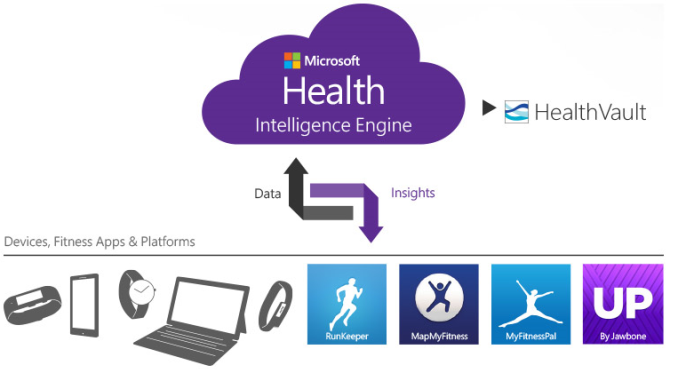
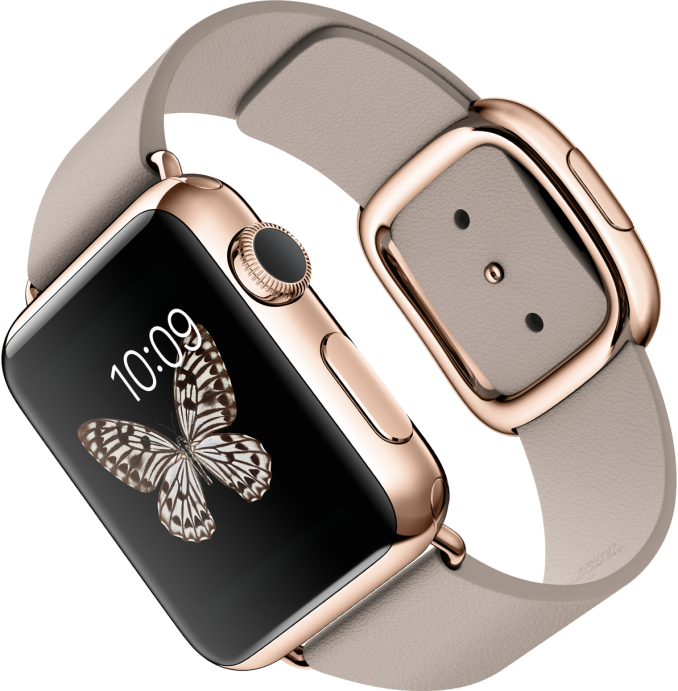
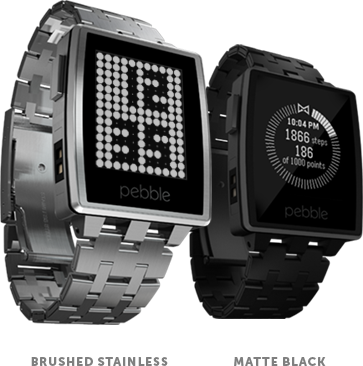
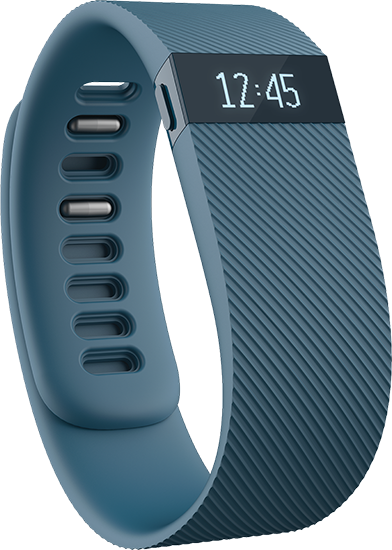
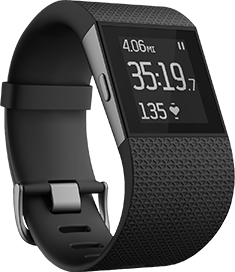








79 Comments
View All Comments
mkozakewich - Friday, January 16, 2015 - link
Ooh, and make sure to call out the density of the display. There's no reason to be using 100dpi screens, for example.wyx087 - Friday, January 16, 2015 - link
Cost is always something that gets mentioned. I don't get it. Watch is a jewelry in addition to time teller. To buy a good classic watch, you will need to spend £100/$100 to thousands. As an adult, why would you want to be seen wearing a plastic G-shock watch?I used to wear a selection of Swiss watches. But I long for phone notifications on my wrist. While Pebble Steel was far from perfect in terms of style, it's the closest thing you can get to a watch replacement:
- Always-on display
- Basic handling of notifications
- View calendar and reminders
- Days up to a week of battery-life
What is ideal is a round smartwatch with thin edges for the always-on e-ink display. Moto 360 was very tempting for its styling, but the battery life and display shows it's not a watch replacement. In fact, a Swiss styled mechanical watch with notification display in the background would be the perfect classic watch replacement. It'll last weeks because there's no silly sensors.
So while your use-cases are good. But I think a 4th can be added (or the smartwatch use-case can be adopted): Watch replacement. A smartwatch doesn't need to have that killer app, just saving the few seconds of bringing up a phone is more than enough. To replace a jewelry the device needs to be a jewelry, the electronics inside isn't as important.
Arbie - Friday, January 16, 2015 - link
Great article! Thoughtful, well-presented in depth, and relevant. Lets have more of this caliber.Thanks.
ithehappy - Friday, January 16, 2015 - link
The only one I like here is the Gear Fit. But then again its fully compatible with Samsung phones only, which is a shame.I am looking forward for the Lenovo e-Ink one which will come out at March.
PS: I am a regular watch wearer by the way, automatics, so no, I am not nearly crazy enough to replace my watch with these toys, I just need one to have notifications on my wrist.
HisDivineOrder - Friday, January 16, 2015 - link
Far from the fargone conclusion, I find the Apple Watch and other wearables to be answering a problem no one had with a solution the majority have rejected in prior decades. People don't wear watches. They don't like being reminded by this thing strapped to your wrist of the finite amount of time they have, so why would they want to wear a watch?I think for wearables to work, they must follow in the way of smartphones and improve something that people already do. Tablets worked because they essentially cribbed off smartphones, but made it bigger and said, "You know you how you used to read a book? Now you can read a tablet."
That's it.
When you look at watches, it's like the argument is they want phones to be so large you don't want to get them out, which seems like they're just undermining phones to make watches more relevant.
And people already didn't want to wear watches. So they'll just keep buying smaller phones instead. I think something like Google Glass or even just a pair of sunglasses with voice recognition and a bluetooth connection to your phone will likely work a LOT better.
Mostly because who doesn't wear glasses? Either prescription glasses or sunglasses... just about everyone wears glasses of some sort.
BuddyRich - Saturday, January 17, 2015 - link
A round pebble steel with wireless charging (though the magnetic induction is better than a regular cable) and I would be sold.Its pricey but I am also interested in the Withings Activite. One of the only companies to take design seriously. Swiss movement mechanical watch that does step tracking, lap swimming, etc. Only thing its missing is some sort of notification light. 8 months battery life. If you don't want the quality you can get the visually identical Activite Pop without swiss movement, sapphire crystal or leather strap. Only thing is, this really is more of a fitness only watch vs. a "smart" watch.
As for smart watch reviews.... Battery Life test (of different modes), daylight readability, nighttime readability (including tests for backlit devices to test if its too bright say in a movie theatre to be always on). Functionality of course and phone interoperability (ie. all functions available paired with iOS vs. paired with Android and what specific phones - Samsung wearables sometimes only fully support Samsung phones). Pairing issues itself.
Lots of photos because style is much more important, on a variety of wrists, perhaps showing what it would look like on a female's wrist for comparison to gauge size.
I am not sure what the use case for a smart watch is, other than to tell time. Im the sort of person who hates using blutooth headset in public (and am annoyed by others that do) so I am not sure I would ever speak to my watch a la dick tracy, but a notification light might be handy, maybe something to pause music or the apple tv when at home, etc.
Tams80 - Sunday, January 18, 2015 - link
The date and day on the Activite appears to be missing. It may seem like a very minor thing, but that is something that makes me hesitant about switching from my current watch. They also don't seem to mention how long the device can function away from a smartphone.Using their heart rate and blood oxygen sensors wouldn't be feasible in such a package, but it would be nice if they made a companion device that's sole purpose was to continuously track them.
MADPhoenix - Sunday, January 18, 2015 - link
Good article. One device that seems to be overlooked (and I think it's fine) was the sixth generation iPod nano (the square one). It wasn't directly a watch but they made a band for it so you could wear it like one. Even the lock screen was an analog clock face.aggiechase37 - Monday, January 19, 2015 - link
Not interested in the goofy watches. Not interested in the glasses because they look silly. Make me some shades that look like shades and we could talk. Until then, I'm all set for my trusty smartphone, my laptop, and my custom built desktop. All this wearable crap seems like a desperate play for growth by these big companies when there really isn't demand for something like that.I don't know a single person who thinks they need a smartwatch. By contrast, when smartphones were first taking off everyone was talking about how they wanted it. On a smartwatch's best day, the reaction is, "neat, but I'll pass."
I do however think there could be a market for the glasses, but not until they don't look like something the doc from Back to the Future would wear. Until then, I'm out.
eric678 - Monday, January 19, 2015 - link
You left out mybasis peak - my current wearable. I like it - mostly a basic watch that tracks everything I want to, but has HR and a good app/web dashboard to analyze.